Autumn has begun to edge its way into the Llanthony Valley, but luckily not before we delivered the second of our Heritage Lottery Funded-Heritage at Work weeks. 11 adult volunteers, 7 Young Heritage Apprentices from the Princes Foundation, 2 students and one work experience pupil joined forces together to complete an amazing amount of work with good cheer and enthusiasm. Warm, wet, then hot weather kept us busy diving for shelter, then thirsting for refreshment.
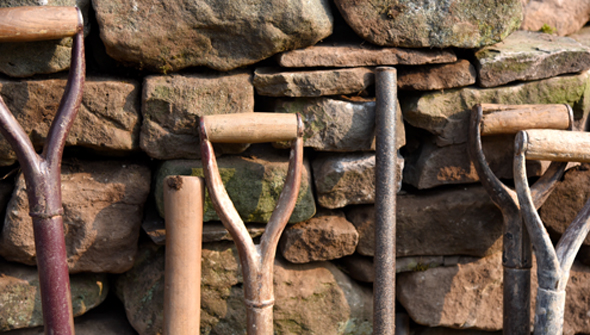
Many hands make light work at Llwyn Celyn
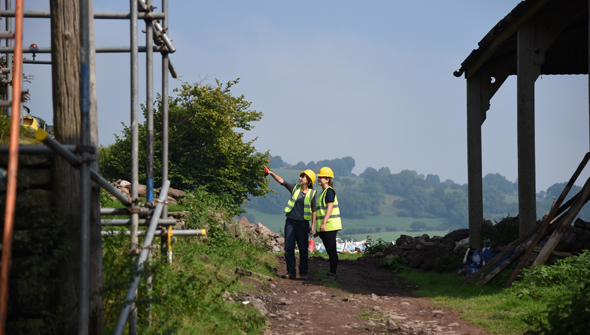
Landmark’s Engagement Manager gives a new volunteer a tour of the site
It is thanks to the experts who lead the individual activities that we are able to achieve so much. Ty Mawr Lime once again equipped the volunteers not only with the skills needed to repoint parts of the cowshed, but also the understanding of why we work with lime mortar (see previous blog for more info about the lime mortar we used).
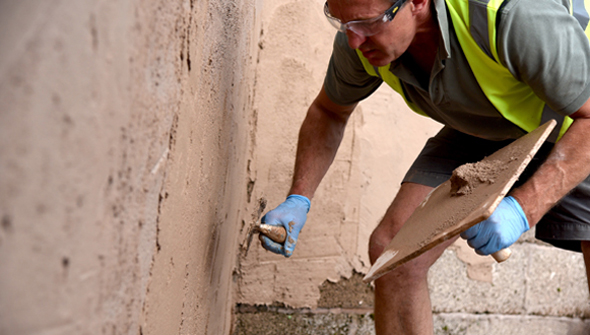
Nigel Jervis from Ty Mawr demonstrates the art of lime plastering.
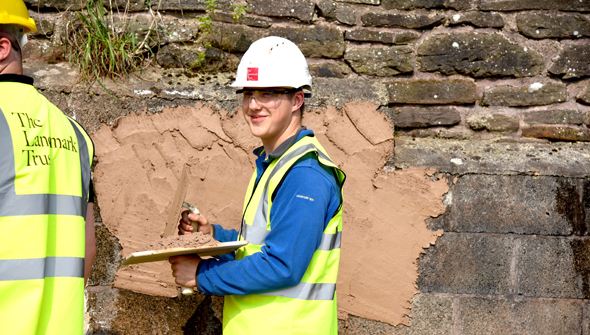
A volunteer practising – it’s not as easy as Nigel made it look!
John Barber and Luke Saunders kept a special eye on their volunteer team who helped out with the drystone walling. The hefty stones once ploughed and dug out of the ground need careful handling. Our perimeter wall is a mighty structure, retaining an ancient trackway on one side, with the ground on the other sloping sharply away. It is not the easiest of areas to work in and there is a wide variety of stones – some-block, others rounded and smoothed by the action of melting ice water, or gauged by the glacier itself as it pushed its way through to form the Llanthony Valley millions of years ago. It eventually stopped its course just a mile or so away from Llwyn Celyn, dumping vast quantities of glacial debris and forming a ridge (the terminal moraine), on which sits the village of Llanvihangel Crucorney.
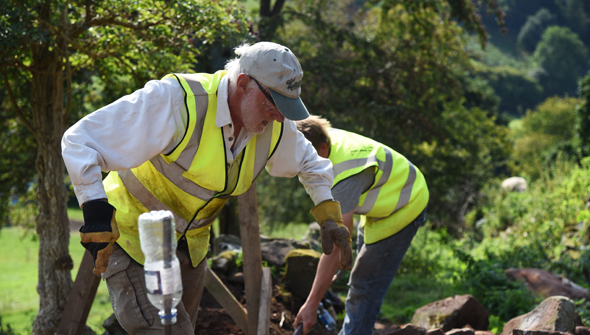
Our perimeter drystone wall is continuing its descent downhill along and old trackway.

Todd - Volunteer mascot and expert rat catcher.
The Young Heritage Apprentices also had the opportunity to spend the day working with Richard Jordan of Jordan Heritage Roofing. A mock-up of a roof, mounted onto the back of a trailer allows Richard to work with groups at ground level and on a compact scale. The YHA’s worked with slates rather than the heavy stone tiles found on Llwyn Celyn’s roof. Roofing is not as easy as it looks – enough maths is thrown in to the process to baffle most people, before you even begin to think about diminishing courses, Welsh valleys (tiled as opposed to lead lined-valleys between two roof slopes) or decorative features. Richard made it tantalisingly clear that the possibilities are endless and that we could be exploring more decorative roofing designs on new buildings at least (but that is a subject for another occasion).
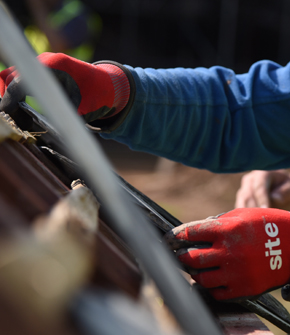
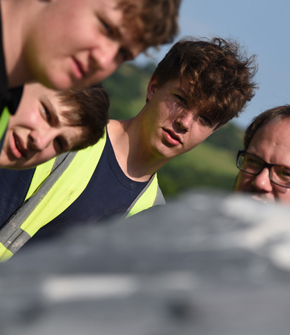
Princes Foundation Young Heritage Apprentices puzzle over the roof tiles. They compared traditional and modern techniques.
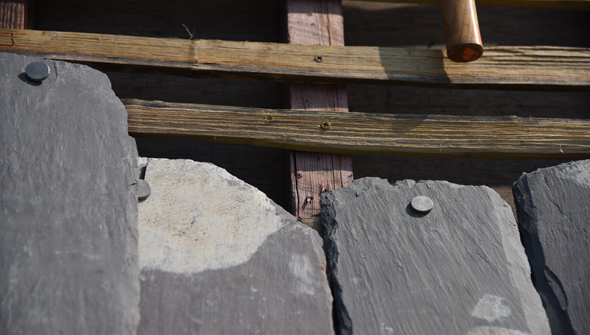
Pegged slates hung over laths
On Friday we held a Landscape Study Day with Professor David Austin, Eddie Proctor, John Gibbs, Einion Gruffudd (National Library of Wales) and Rob Yorke. The day delivered a loosely chronological history of the valley, the people and the building – of a place that has witnessed conflict and change. Despite the timeless quality of the hills, time is always shifting here too and it fitted to end the Study Day by thinking about the future, of how lives might change here and the balance shift between nature and nurture as farming practice evolves (a full report from the Study Day will be available soon).
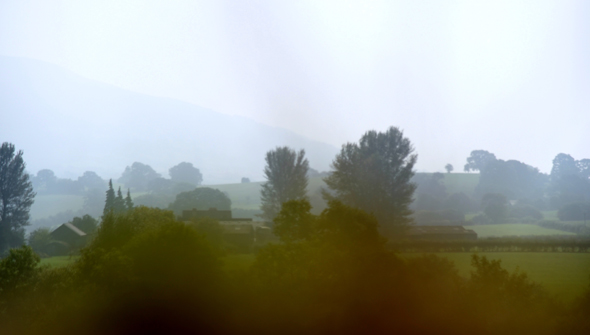
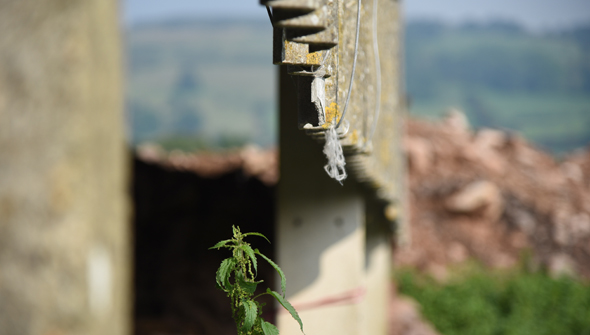
We are just beginning to understand the landscape around Llwyn Celyn and the marks left by man after centuries of agricultural use.
On Saturday Llwyn Celyn welcomed a range of visitors from near and far to our Open Day. Gareth Irwin, whose talents at making traditional Welsh furniture blend so well with the building crafts, was joined by artist Penny Hallas who delivered an inspiring drawing workshop influenced by the work of David Jones, who lived and worked in valley for a time. Here Jones developed his practice, painting and drawing with an emotional response to the landscape – layering images in a way that defy time, mixes perspective and creates new relationships between objects, boundaries and horizons. Penny encouraged people to draw onto acetate sheets that could then be overlaid in different ways, creating unique images that were full of depth - shifting, intangible, yet completely engaged with the place. These drawings add to our ever growing portfolio of work created as part of our artists in residence programme, as do the wonderful documentary photographs taken by student Ghislaine Howard seen here.